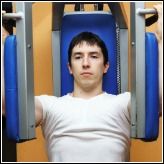Circuit Training Programs

A lot has been written regarding circuit training programs over the years, and there seems to be reasonable agreement concerning the benefits of this type of training. There are a number of different ways to organize a circuits program, however, what is not so clear is - which type of training program best satisfies the variety of health and fitness needs? Let’s face it, not everyone wants to be an elite athlete. Some participants just want to use circuits to get fit and stay fit, while others want to use circuit training to lose weight.
There are sites and articles that will tell you definitively that this particular programme is the best way to deliver a particular training result, they may even be correct. I, however, prefer to provide you with a process of how to design your own circuit training program. Once you understand the how and the why, you will be able to design a program which will satisfy the very specific and changing needs you have at any given time. The whole process begins with a single question:
“What is your training objective?”
Do you want to lose weight or build endurance? Once you know what your training objectives are, designing the path which best meets these objectives will become clear – once you understand the ‘how’. I am going to explain the ‘how’ with this article.
Circuit training, like all training programs, is designed with a number of variables which can be manipulated to get a specific training result. The four most important training variables which make it possible to design a very specific training program are:
- Load – The resistance you use in your circuit training;
- Rest – The recovery periods you use between your stations and between each set of exercises;
- Duration – The length of the exercise period and the time it takes to complete the full session;
- Intensity – The effort you put into completing each station.
The effect of Load on Your Circuit Training Programs
So how does load affect your circuit training program? Circuit training programs can be designed to utilize only your body weight and up to 60% of your 1RM when using traditional weight lifting methods. Due to this, the stress you are able to place on your muscular system will vary from very light to moderate loads. Consequently, the higher the load or the closer you work to the top end of the load spectrum, the more you are able to promote the development of strength.
The effect of Rest on Your Circuit Training Programs
Circuits training can be organized without rest periods (or at least the rest is the race from one station to the next). Recovery periods between stations can be as high as 45 seconds. The more you want to target endurance the less recovery should be scheduled between stations. As a consequence when your rest recovery is minimal your heart rate will be maintained at a higher level throughout the full duration of the circuits training session which tends to promote an improvement in VO2max.
In circuit training work/rest ratio is usually 1:1, meaning that when 15 second is used as the work unit, the rest between stations is 15 seconds and so on up to your 45 second work unit.
The effect of Duration on Your Circuit Training Programs
The duration of your training can be as little as 15 minutes up to about 45 minutes. Consequently, the aerobic effect of the training session can be minimal to moderate. The duration of your circuit training session can be manipulated by the number of exercises in the circuit which can range from 6 through to 12. The numbers of sets will also dictate the duration of the session and this can range from 2 up to 5 sets. Thus it is easy to see how your workout period can range from 15 minutes through to 45 minutes!
It is important to note that the duration of your circuit training session is a combination of the work unit and the rest unit. And although many of the studies about circuit training were performed with work and rest periods of 30 seconds, these are not the only work/rest ratios you can enforce in a circuit training routine.
The effect of Intensity on Your Circuit Training Programs
There are a number of training means which can be used to determine the intensity of your training program. You can use training loads which range from your body weight (this represents 0% of your 1RM) or you can use medicine balls and power bags bags, this represents a light resistance, or you can utilize up to 60% of your 1RM when training with traditional weight lifting implements.
In addition to this you can also use the rhythm or speed with which you carry out each exercise as your gauge of the exercise intensity. Consequently, the faster the rhythm of the exercise, the higher your workout intensity will be.
So there you have it, a number of ways to manipulate the variables in training to bring about a specific training objective. These are the factors that will shape the design of your entire training program to meet a specific training objective. And there are many ways in which you can design circuit training programs once you know how to manipulate the workout resistance, rest, duration and training intensity. Once you know how to manipulate these variables, you will be surprised at the difference it will make to the outcomes of your fitness goals.
Sign Up For The Latest Track And Field News And Improve Your Athletic Performance!
Read about Planning For a Circuit Training Program
From "Circuit Training Programs" Back To "Faster, Stronger, Better – Your Shortcut To Improved Athletic Performance"







